'Huge fortune' from the 1600s, including gold and silver coins, found in German church where Martin Luther preached
Four bags of money hidden around 1640 and worth "much more than a craftsman could earn in a year" have been found inside a statue at a Gothic church in Germany.
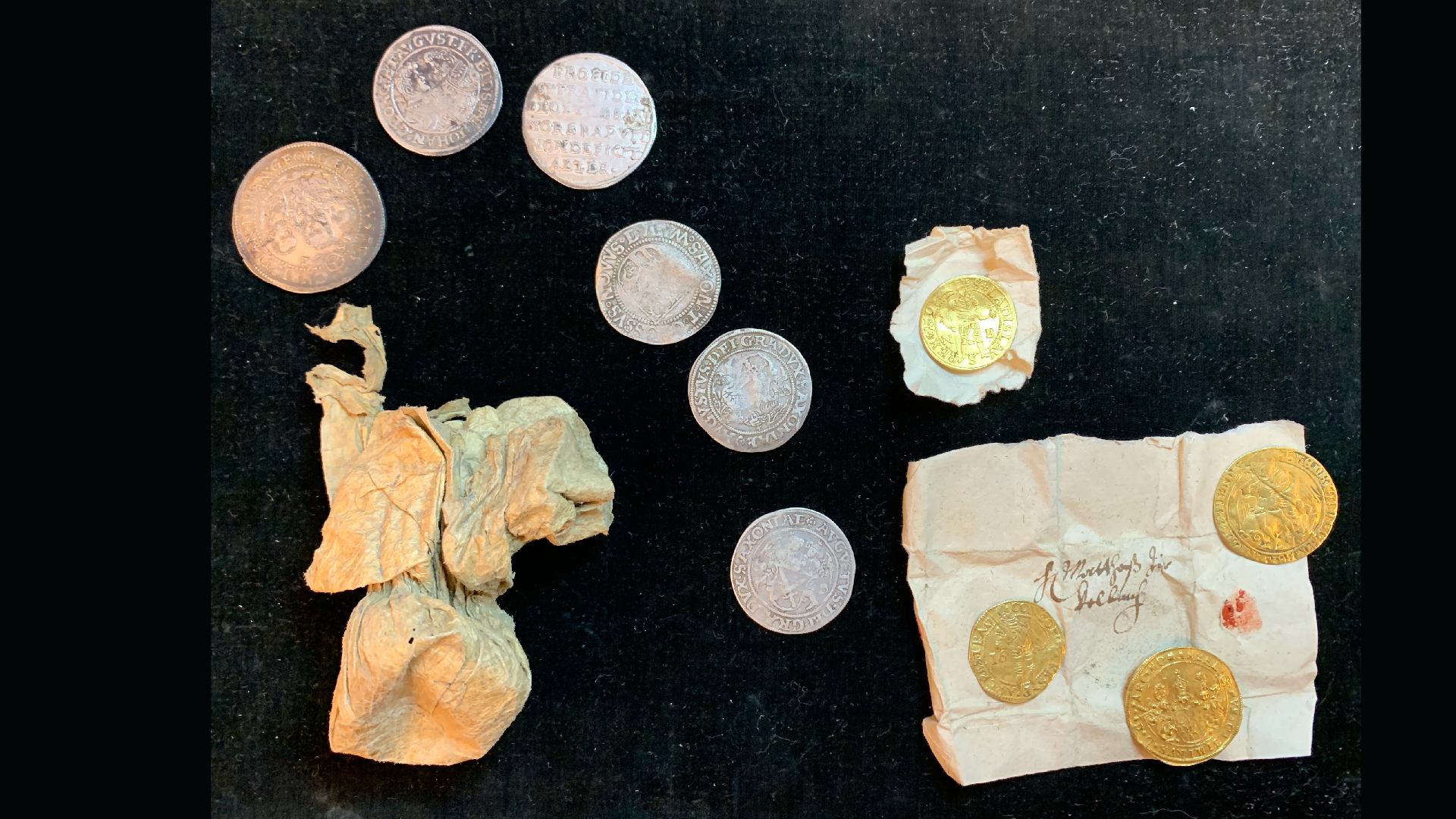
Restorers at a famous Gothic church in Germany have discovered a "huge fortune" that was hidden in the leg of a statue nearly 400 years ago. The treasure — four bags of coins from the 1600s — was likely concealed during the Thirty Years' War, when Swedish soldiers frequently plundered the region.
The discovery is an "incredible story," Ulf Dräger, curator and head of department at the State Coin Cabinet of Saxony-Anhalt in Germany, told Live Science in an email. The restorers, who made the find in May 2022 but didn't announce it until November 2024, uncovered the coins at St. Andrew's Church, a Gothic church in Eisleben, a town in the east-central state of Saxony-Anhalt. This church is where Martin Luther, the Protestant Reformer who wrote the "Ninety-five Theses" against corruption in the Roman Catholic Church, delivered his last four sermons in 1546.
Around 100 years later, in about 1640, someone used the church as a safe haven to hide their stash. They put the four "bulging purses" holding 816 coins into a cavity in a leg of a sandstone statue, which is part of an epitaph for a countess and count, Dräger said.
"It is nothing short of a miracle that the treasure did not come to light sooner," he added. It will take time for coin experts to assess the hoard's value, but "at the moment, I can only say that it is a huge fortune. Much more than a craftsman could earn in a year," he noted.
The most valuable gold coins were wrapped in paper and labeled in a way that indicates the money belonged to the church treasury. "However, it is not the bell pouch for the Sunday collection," Dräger said. "Instead, it is the collected income from special services provided by the pastors," such as weddings, baptisms and funerals. Pastors also collected money from "chair fees," in which congregants would pay to sit in prominent seats in the church, he added.
Related: 32 stunning centuries-old hoards unearthed by metal detectorists
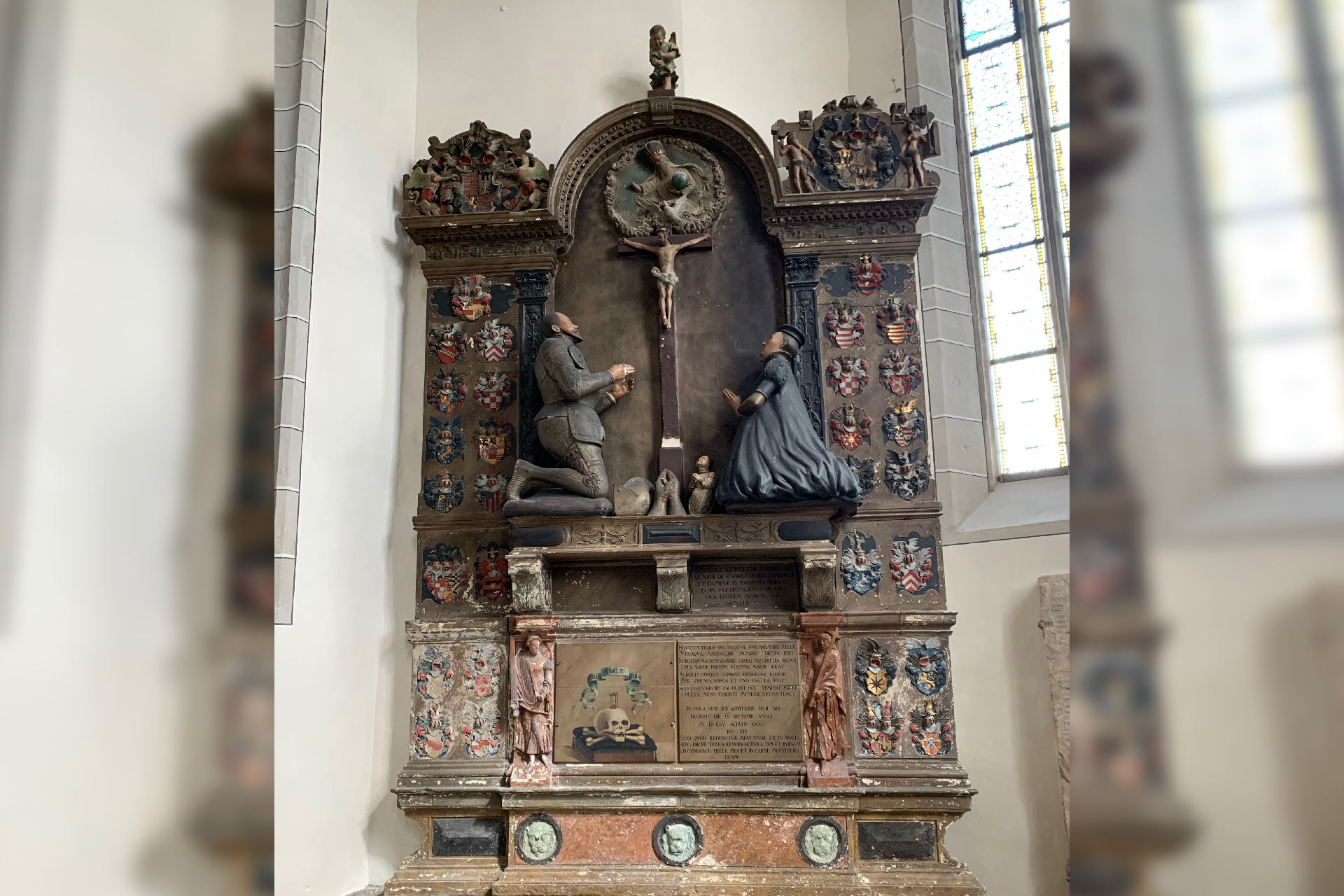
The coins were discovered in the leg of the kneeling count statue at St. Andrew's Church in Eisleben, Germany.
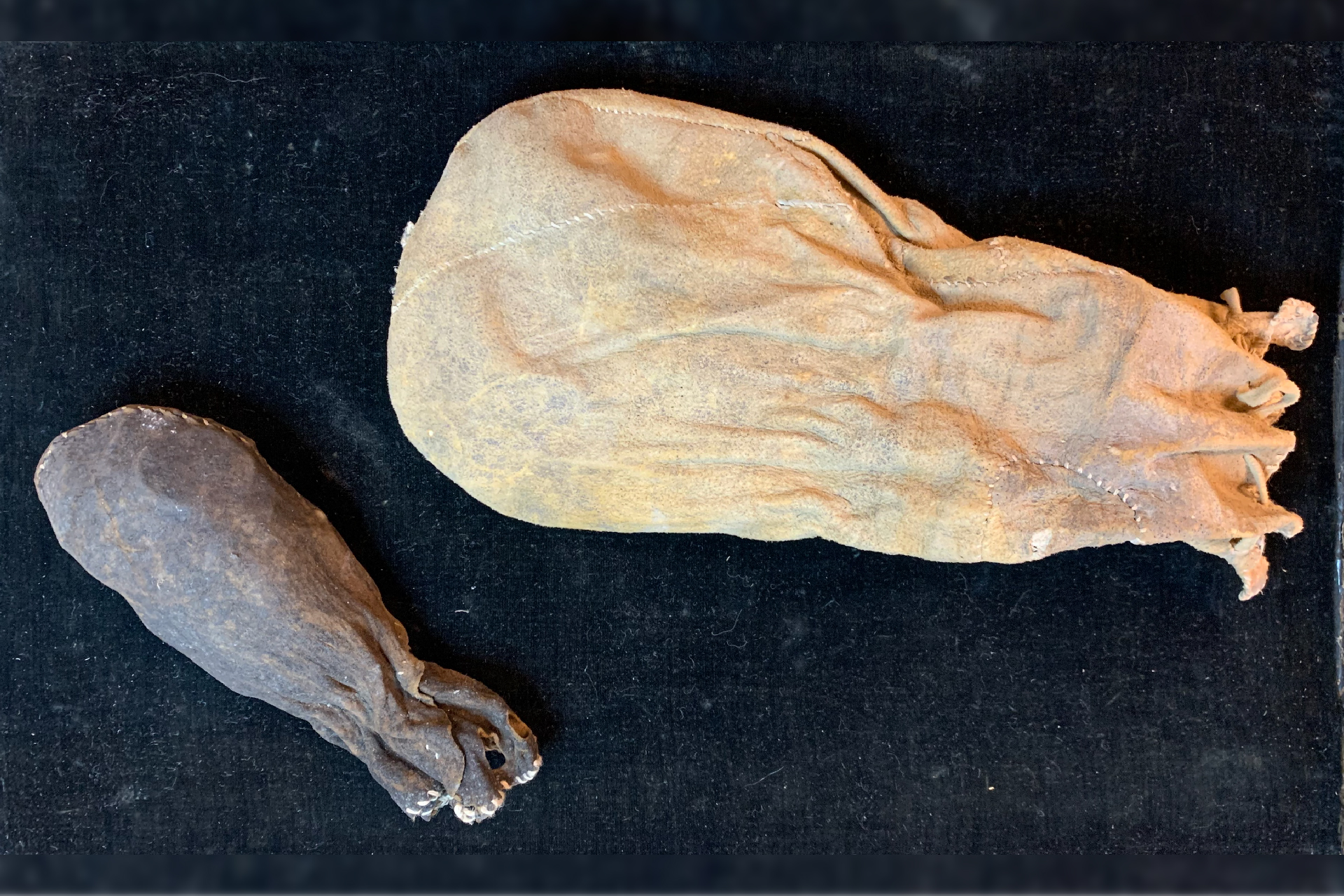
Two of the leather pouches that held the coins.
The stash includes a gold coin known as a "golden angel"; gold ducats and double ducats; silver coins known as thalers, half-thalers and quarter-thalers; and hundreds of pennies.
Sign up for the Live Science daily newsletter now
Get the world’s most fascinating discoveries delivered straight to your inbox.
The hoard was hidden during the Thirty Years' War (1618 to 1648), a series of wars that started with the Holy Roman emperor imposing religious control over his realm and later involving political, territorial and commercial conflicts in neighboring areas of Europe. During this conflict, Swedish soldiers plundered Saxony-Anhalt, including Eisleben, sometimes weekly. Locals were forced to quarter and feed Swedish troops and pay them vast sums of money. "Eisleben lost around half of its population between 1628 and 1650," Dräger said. "[It was] a picture of constant war horror."
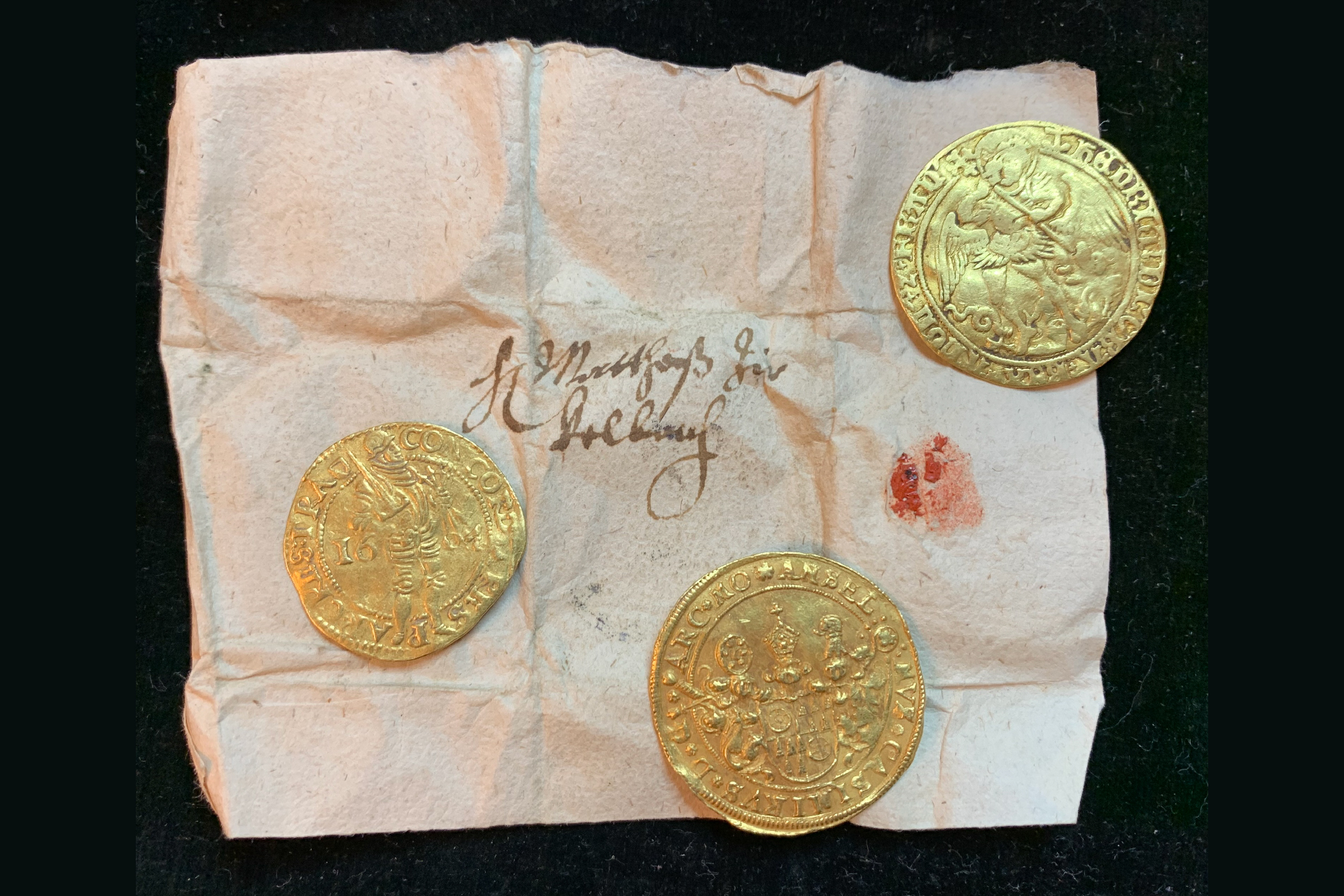
The valuable gold coins wrapped in paper.
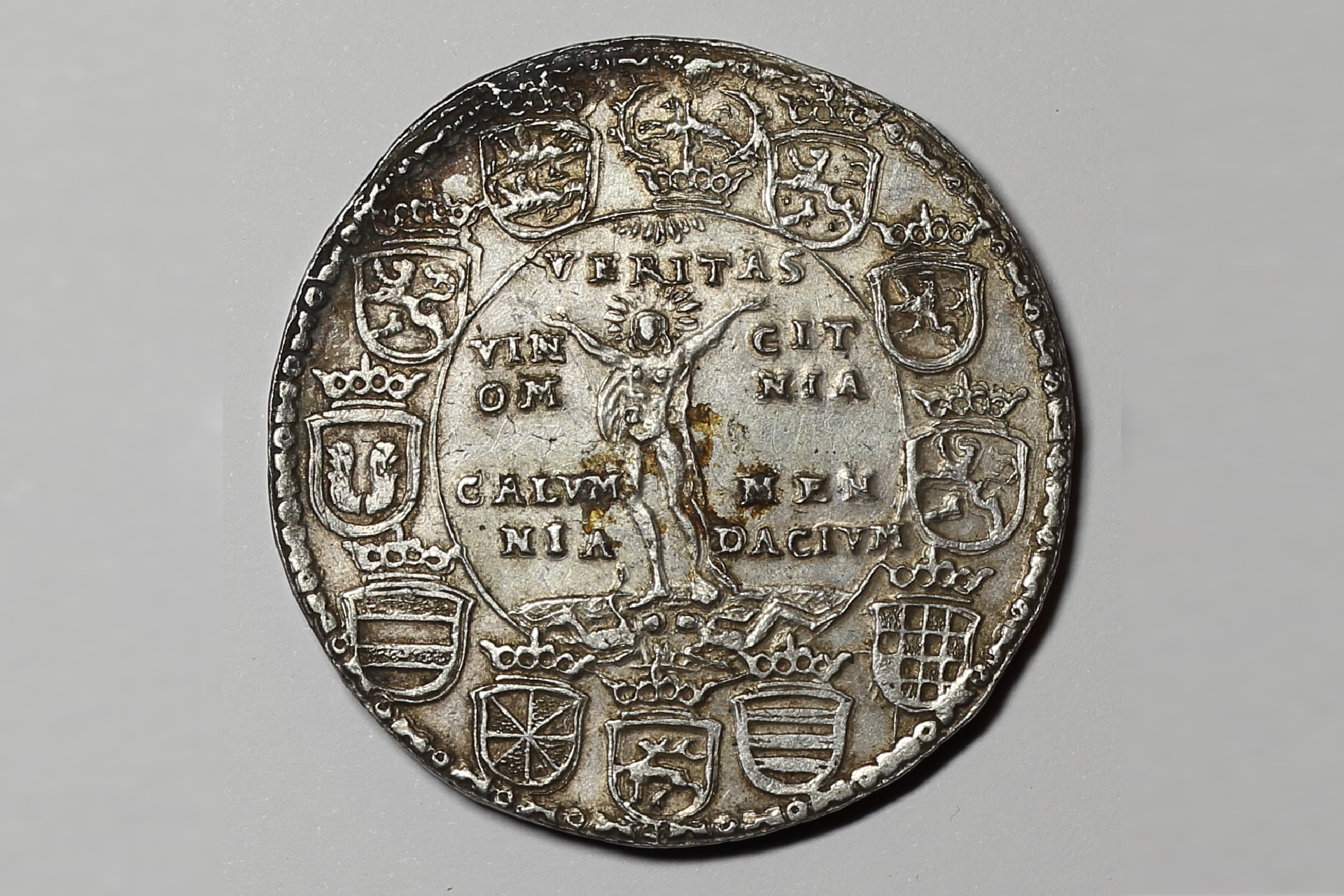
A quarter thaler, minted in Dresden in 1636.
How much was the hoard worth?
To put the treasure into context, a successful 17th-century miner in the region earned about 1 thaler, or 24 pennies, every week, Dräger said. One pound (0.45 kilograms) of butter cost about 3 pennies, and two herrings cost two pennies. In addition to the gold and silver coins, the treasure contains about 800 pennies.
The loss of this hoard was likely a tragedy at the time, Dräger said. "This makes the find a highly significant historical and real testimony, not only for Eisleben, but also for the history of the state of Saxony-Anhalt in the heart of Europe," he said.
Historians know that from 1561, Eisleben had an "Aerarium Pastorale" — a common parish fund that was used as a pension and health fund, as social insurance for pastors, and to promote the training of theologians. "Perhaps we now have this fund before us," Dräger said. "Historical research will show this."
Researchers now plan to study each coin individually and document their finds online and at the Moritzburg Art Museum in Halle. They will also present their findings at St. Andrew's Church.
"It is a stroke of luck that the Lutherstadt Eisleben Protestant Parish Association has decided to lend the coins to the museum to enable research to be carried out," Dräger said.

Laura is the archaeology and Life's Little Mysteries editor at Live Science. She also reports on general science, including paleontology. Her work has appeared in The New York Times, Scholastic, Popular Science and Spectrum, a site on autism research. She has won multiple awards from the Society of Professional Journalists and the Washington Newspaper Publishers Association for her reporting at a weekly newspaper near Seattle. Laura holds a bachelor's degree in English literature and psychology from Washington University in St. Louis and a master's degree in science writing from NYU.









